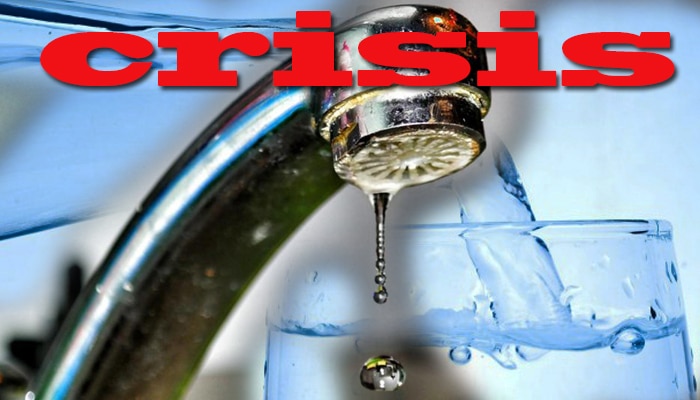 In Auckland, at the moment we are having a water crisis. Potentially the worst water crisis in the city in over 20 years. Why you might ask why? We have had a deluge of rain and available water – why will we not have enough clean water available?
In Auckland, at the moment we are having a water crisis. Potentially the worst water crisis in the city in over 20 years. Why you might ask why? We have had a deluge of rain and available water – why will we not have enough clean water available?
In order to understand the crisis, we need to understand the system that provides us with clean water.
The majority of Auckland’s water comes from 10 dams in the Hunua and Waitakere ranges. It is treated at four water treatment plants: Ardmore, Huia, Huia Village, and Waitakere. Raw water, which contains contaminants ranging from large debris to micro-organisms, undergoes a series of treatment stages to ensure the requirements of the Drinking Water Standards for New Zealand are satisfied. Water first passes through ‘screens’ that remove any large debris such as leaves, branches, rubbish, and dead insects.
The water is collected in huge settlement tanks where a coagulant aluminium sulphate (alum) and flocculant are used to drop the solids out.
As the alum and dirt particles stick together, they form large, heavier particles called ‘flocs’ which sink to the bottom of the tank. The sediment that settles is thickened and dewatered.
The water is then treated to remove bacteria. Chlorine or sodium hypochlorite is added to kill any pathogenic bacteria that might be in the water after filtration. Finally, fluoride is added to Auckland’s treated water supplies. The water is tested all the time with an online testing system.
The result is safe water that we can drink from our taps.
The present crisis has been caused by Auckland’s main water treatment plant at Ardmore becoming swamped with silt and debris after heavy rain, forcing the plant to process water at half the normal rate.
Watercare said use needed to be down to about 400 million litres of water a day, warning that if the target is not met, then it might need to release untreated water into the system and issue a region-wide boil-water notice.
Sludge conditioning is critical to achieving optimum thickening and dewatering results irrespective of the technology used. At JIPL we do sludge conditioning test work to determine the best outcome and to assess the right technology that is needed for each particular sludge. We have an onsite laboratory to do sludge conditioning test work. We have years of experience in sludge conditioning and have helped large numbers of clients around New Zealand.
In the rest of the world, filter presses are used extensively in Water Treatment Plants specifically for the dewatering of alum sludge, however, in New Zealand, many WwTP staff are still unfamiliar with their benefits. In many New Zealand WwTPs’ centrifuges are still used.
One of the most efficient and effective ways to remove solids from almost any liquid is with a membrane squeeze filter press – a simple process that has wide applications and far superior overall cost-effectiveness than most other filter processes.
The filter press is recognised as being capable of achieving higher cake solids than any other dewatering system, and for most applications. For example, a membrane squeeze filter press can achieve 25 percent higher dry solids than other types of dewatering equipment, such as belt or centrifugal presses (commonly used in New Zealand). In addition, the solid capture rate for a membrane squeeze filter press is generally 99.5 percent plus as oppose to other types of continuous dewatering which can vary between 90 – 97 percent solids capture. The savings in terms of cake transport and disposal is very significant.
The use of polymer for flocculation with filter presses is often 40 – 60 percent less than that required by other types of dewatering systems. Further, the polymer remains almost entirely within the cake, unlike other technologies.
The filter press produces very clean filtrate – often ten times or less the residual solids content of other systems. In industry, the clarity of the filtrate may allow re-use within the process without further treatment, thus chemical and water savings can be very significant. For example, filtrate from fiberboard and paper manufacturing can be recovered clean enough for processing reuse.
Unlike other dewatering technologies, such as belt, screw, vacuum disc, centrifugal decanters, etc., the filter press has few moving parts, and thus very low maintenance and energy costs. Filter presses are very reliable, and they have a far superior plant life expectancy – often up to 50 years versus 15 years for most other dewatering technologies.
JIPL has a sophisticated pilot test press permanently available in New Zealand for trial work. It is skid mounted for easy transport, can produce cakes to different thicknesses and features a membrane squeeze option. Utilising the membrane squeeze, it can operate up to 16 bar and cake back-wash and air-blow are also possible.
We can undertake trials on your wastes and effluent and provide a filter press cost-benefit analysis. Trials are especially important to prove the process under specific production conditions and thereby enable a factual cost-benefit analysis.
JIPL is the New Zealand agent for Latham International Ltd who are specialists operating at the forefront of today’s pressure filtration technology.
At JIPl, we believe that dewatering is about sludge conditioning but also about finding the right equipment for the right job.
At JIPL we know sludge conditioning and depending on the sludge and the requirement we also supply other thickening and dewatering technologies such as DAF (Dissolved Air Flotation) Technology, rotary drum thickeners, Gravity belt thickeners, belt presses, polymer dosing units, moving plate screw presses, centrifuges, and separation equipment.
Contact us for more information about any of our products – [email protected]

